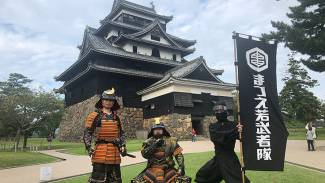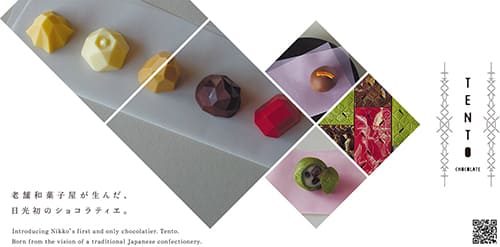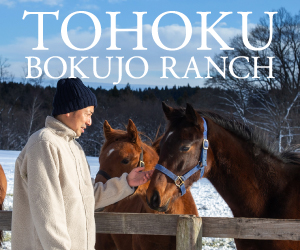UTSUNOMIYA GYOZA
THE FLAVORFUL RISE OF A DUMPLING PARADISE
Sponsored content
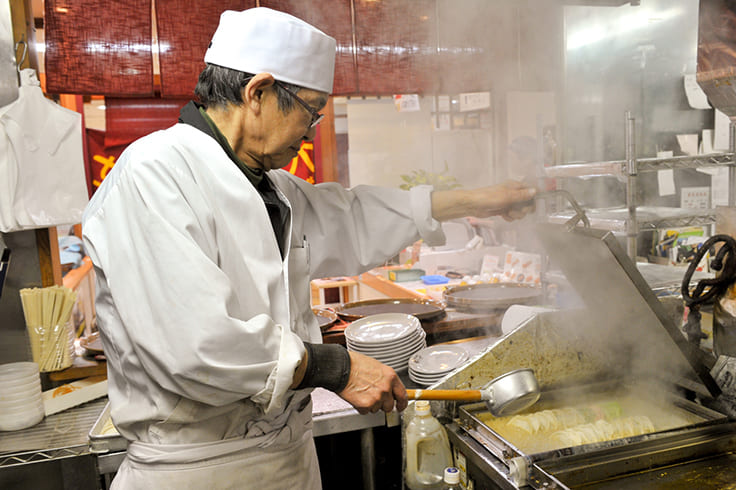
THE UTSUNOMIYA GYOZA ASSOCIATION
There aren’t many dishes more versatile than gyōza, the Japanese take on jiaozi Chinese dumplings. Though the pan-fried version consisting of ground pork, garlic and vegetables like napa cabbage and chives wrapped in thin, rolled dough is the most popular one, it’s far from the only interpretation in town.
Regarding fillings, gyōza can technically be made with anything from beef to chicken, shrimp, mutton, lobster, mushrooms, spinach, carrots and more. They can also be boiled or deep-fried, eaten with soy sauce or vinegar, or served as a full meal or side. Even with the same kind of gyōza one can find a lot of variation with the proportions of the ingredients or the thickness of the dough. But although there seems to be no limit to gyōza varieties, chances are most if not all of them can be found in Utsunomiya, the gyōza capital of Japan.
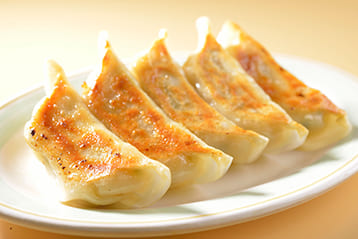
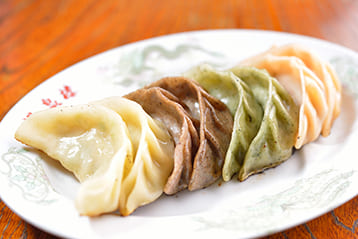
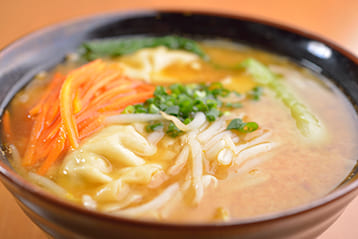
Located in Tochigi Prefecture in northern Kanto, Utsunomiya is home to about 350 gyōza restaurants, almost enough to try a different dumpling every day of the year. But, of course, it wasn’t always like this.
The history of gyōza in Utsunomiya goes back about 80 years. According to some theories, that’s when Japanese settlers and WWII soldiers returned home from China and brought with them tales of jiaozi. Eager to replicate the dish at home, they opened Utsunomiya’s very first gyōza restaurants while also localizing the recipe slightly. For one, the Japanese version contains much more garlic and is generally made with thinner dough, and while in China the boiled dumplings (called sui-gyōza in Japan) are more common, in Utsunomiya, the steamed and pan-fried kind rules supreme.
However, that only explains how gyōza first arrived in Japan, not why Utsunomiya became famous for them. The answer to that may lie in the local climate. The most basic things needed to make gyōza on a larger scale are wheat for the flour that goes in the dough, pork and cabbage for the rest of the filling.
Thanks to Tochigi’s fertile soil, clean water and abundant sunlight, the prefecture has long been known for its impressive agricultural output, including everything needed to make gyōza. However, there was something else that’s helped Utsunomiya gyōza achieve the kind of name recognition that they enjoy today — the Utsunomiya Gyoza Association.
The Utsunomiya Gyoza Association (Utsunomiya Gyozakai) is the only gyōza cooperative operating in Japan, formed with the goal of promoting the dumplings across Japan. Many years ago, the citizens of Utsunomiya were reportedly “ashamed of being known for gyōza,” but thanks to the work of the association, over time they grew to be proud of the dish as the rest of the country showed their love for the Utsunomiya specialty.
This is largely thanks to the efforts of the Utsunomiya Gyoza Association that include the Utsunomiya Gyoza Festival and other gyōza-related festivities. Many of Utsunomiya’s dumpling restaurants are today directly associated with the group, including Utsunomiya Minmin, one of the famed gyōza eateries in the city.
Utsunomiya Minmin has been serving its timeless taste since the launch of its first restaurant in 1958. Minmin’s gyōza, using carefully prepared dough wrapped around vegetable fillings such as Chinese cabbage, and pan-fried crisp and brown using high-quality sesame oil, have gained legions of fans. Today, Utsunomiya Minmin Honten (the main branch) is packed with customers throughout the day.
For diehard gyōza fans, there is the unmissable Kirasse main store. Described as a “gyōza theme park,” Kirasse is made up of establishments belonging to the Utsunomiya Gyoza Association. Besides five permanent restaurants, it also has a “your choice of the day zone” where guests can enjoy dumplings chosen from 32 participating eateries. This makes Kirasse a convenient one-stop destination for anyone hoping to try the best that Utsunomiya has to offer.
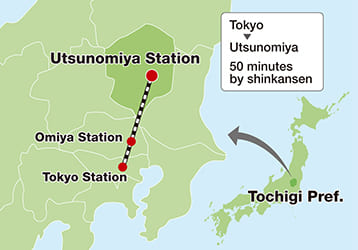
The best part is that discovering it all for oneself is the easiest thing in the world. A shinkansen from Tokyo to Utsunomiya takes only 50 minutes, but the city can also be reached via the JR Ueno-Tokyo Line and the JR Tohoku Line in a little less than two hours, so it’s possible to enjoy Utsunomiya’s specialty on a short day trip. With an average price of ¥200 to ¥300 per plate, a gyōza journey into the city is a culinary adventure that won’t break anyone’s wallet.



